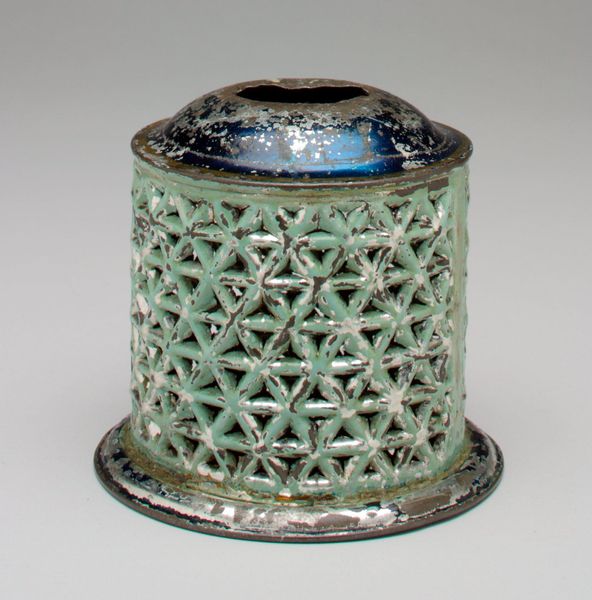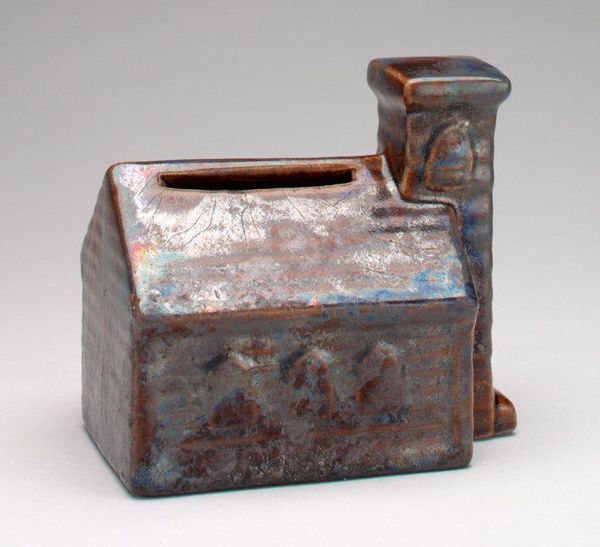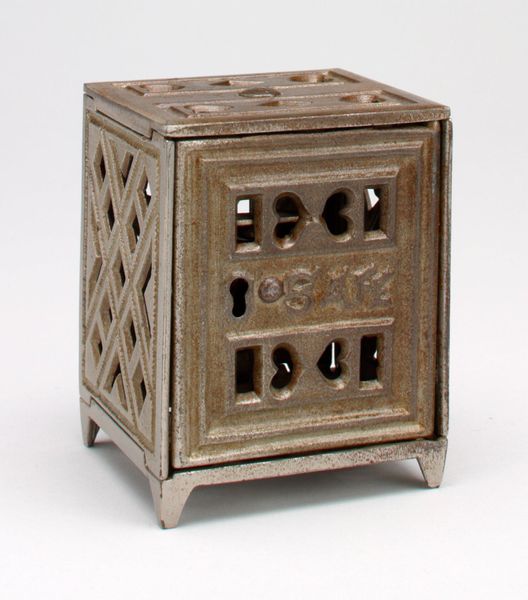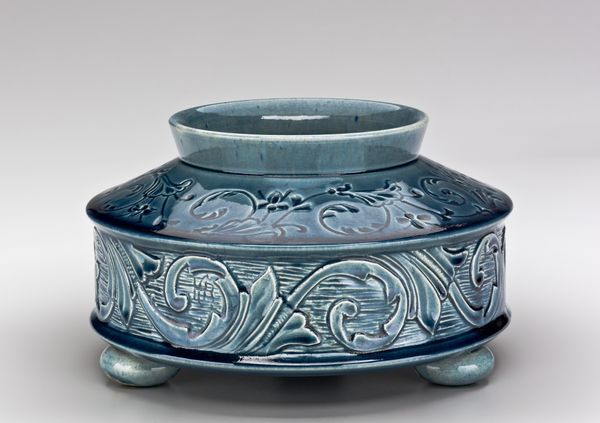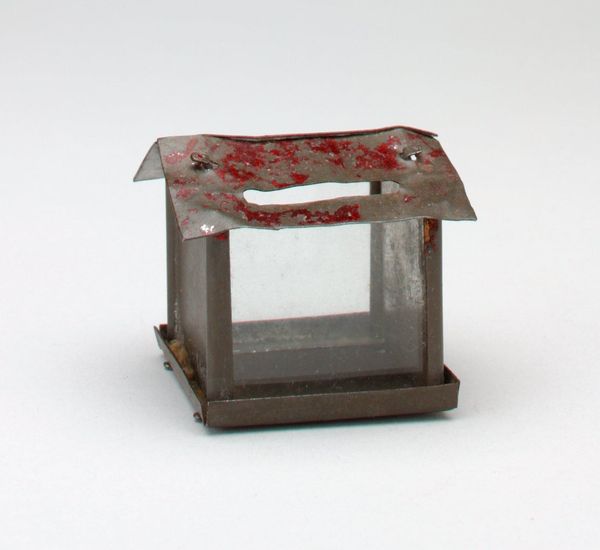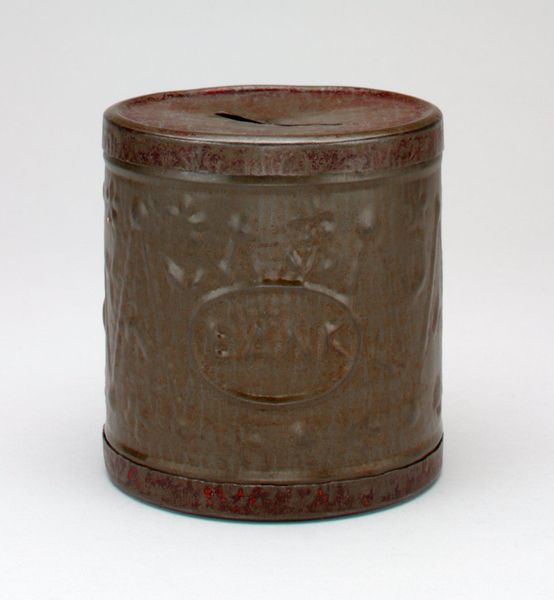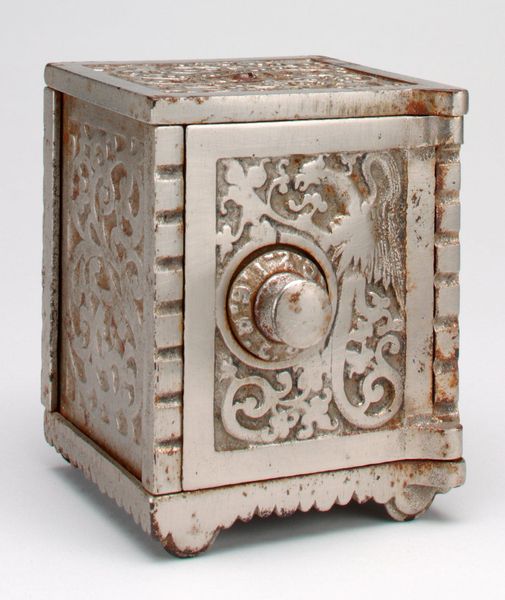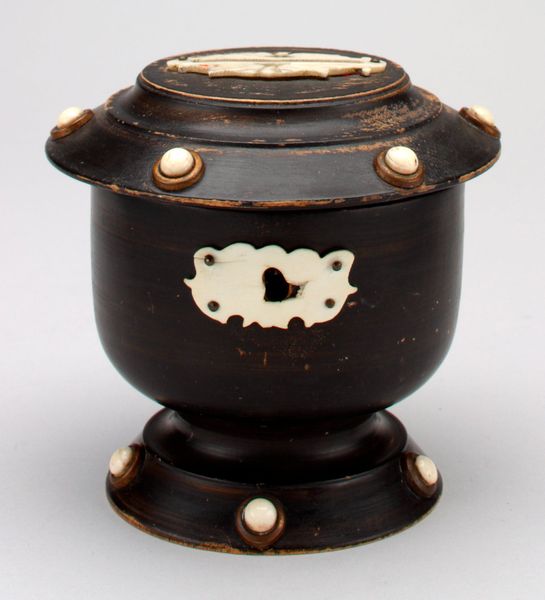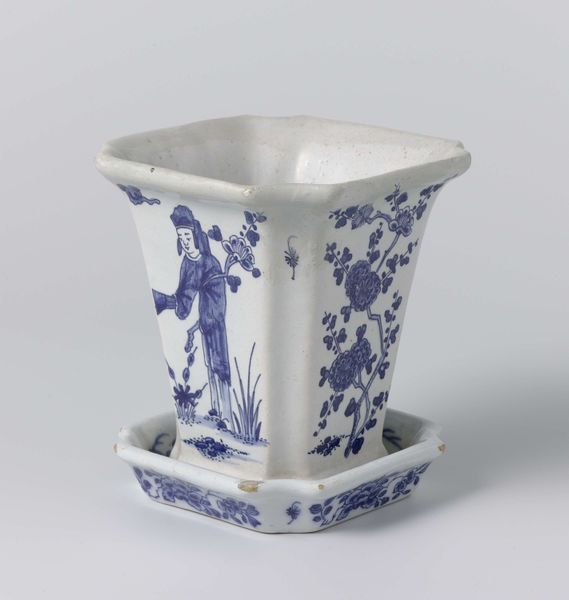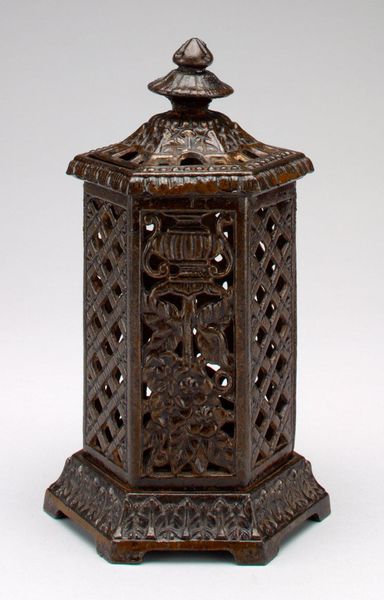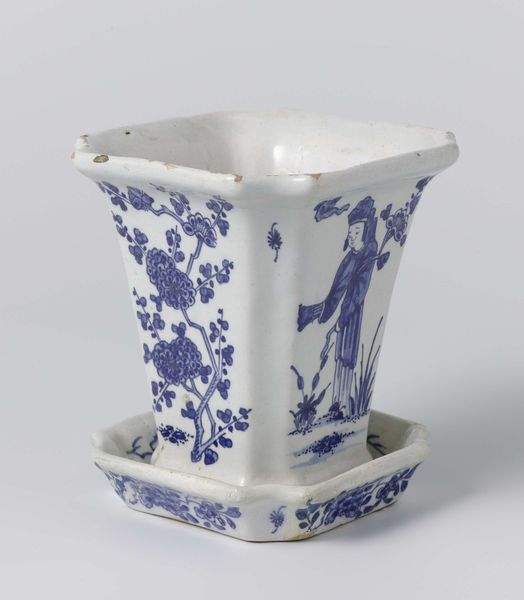
ceramic, earthenware
#
ceramic
#
earthenware
#
stoneware
#
ceramic
#
decorative-art
Dimensions: 3 1/2 x 4 3/8 x 2 5/8 in. (8.89 x 11.11 x 6.67 cm)
Copyright: No Known Copyright
Curator: This piece, "-Furnace- still bank", is earthenware from the 20th century, residing here at the Minneapolis Institute of Art. The metallic painted finish on the ceramic has this weight of industrial form, and the function shifts into decorativeness with the silver "furnace" feature, yet still references labour in the making. How would you approach it? Editor: It looks almost like a miniature, simplified Art Deco building! The colour and textures give it a somber mood despite the small scale. It feels very... utilitarian, almost like something that would belong in a factory or an office rather than a home. What are your thoughts on this bank, considering it is made of ceramic? Curator: Right, consider the context of the late 19th and early 20th centuries when similar "still banks" were more common: mass production created disposable incomes to save but also increased wage labour. While mass production allowed for such cheap banks, making them typically from iron, it looks like here, the piece subverts expectations by using earthenware painted to seem metal. Do you notice anything peculiar in its fabrication that emphasizes or detracts from its supposed utilitarian function? Editor: That's interesting; the ceramic material gives the work a handmade feeling despite its appearance, sort of complicating that industrial aesthetic. Perhaps this could be interpreted as art and craft competing and coalescing into everyday life. How did the material choice impact the production process, in your opinion? Curator: Well, the ceramic allowed for detail in a cheap form due to its cast nature; though it lacks functionality as more than just decorative, consider the symbolism attached to it. Look at it, it is meant to mimic a mechanical device with this bank! This would resonate strongly with people who might save a bit of their earnings as opposed to iron, which has this hard labour connotation of wealth building and hoarding of assets! Editor: The ceramic indeed offers a different take on the act of saving. It transforms something potentially harsh into something familiar, approachable... even playful! Thanks! Curator: Absolutely. And it invites us to reconsider what everyday materials and manufacturing processes can tell us about larger cultural trends and individual experiences.
Comments
No comments
Be the first to comment and join the conversation on the ultimate creative platform.
